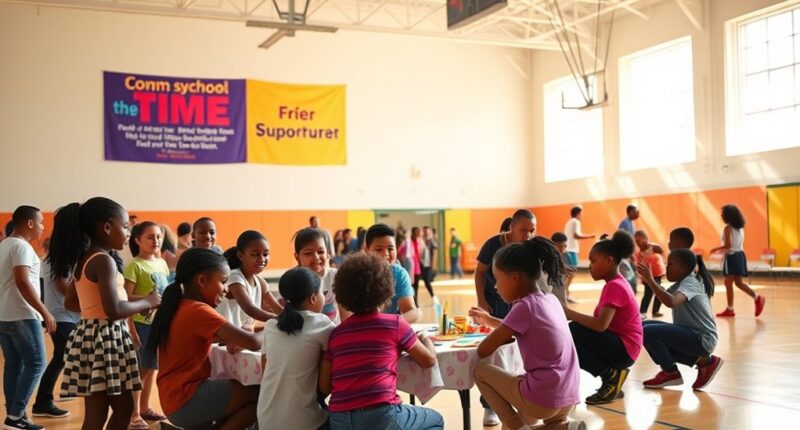In your area, after-school programs offer valuable resources that extend classroom learning while helping your child develop important social and emotional skills. These structured activities provide academic support and foster teamwork, ultimately improving grades and attendance. However, barriers like cost and location can affect access. It’s important to explore your options and learn how you can support local initiatives to enhance quality and availability. There’s much more to discover about finding and engaging with programs available to your family.
Key Takeaways
- Explore local schools, community centers, and libraries for after-school program offerings available in your area.
- Check for government grants and private funding opportunities that support after-school initiatives in your community.
- Investigate the hours of operation and locations to find programs that best fit your family’s needs.
- Look for community coalitions advocating for quality after-school programs to ensure access and support.
- Assess the qualifications and training of staff in local after-school programs to ensure quality and effectiveness.
Overview of After-School Programs

After-school programs play an essential role in providing structured activities that extend learning beyond the classroom. These programs focus on academic support, personal development, and social skills, catering mainly to children and youth, though some include adult learners.
You’ll find a variety of programs, such as academic tutoring, sports, arts, and community service, organized by schools, community centers, or non-profits. Locations can range from schools and libraries to parks and community facilities.
The management often falls to local organizations, relying on government grants, private donations, or family fees for funding. Availability can vary based on resources and community needs, ensuring that diverse groups have access to enriching experiences that foster growth and learning.
Benefits of Participation
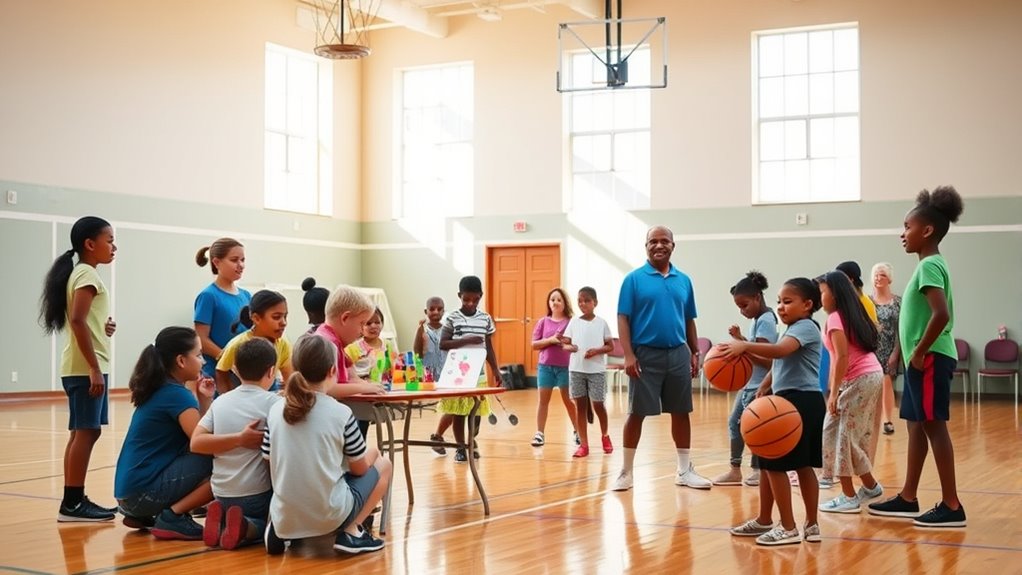
Engaging in after-school programs offers numerous benefits that extend well beyond the school day. By participating, you can improve your academic performance, leading to higher grades and better test scores. These programs provide individualized attention in challenging subjects and offer homework support to help manage your workload effectively.
Socially, you’ll develop essential skills, like conflict resolution and teamwork, through interactions with peers and mentors. Emotionally, you’ll find a safe space to express yourself, enhancing your emotional intelligence and well-being.
Furthermore, after-school programs reduce risky behaviors and promote positive choices, contributing to a safer community. Ultimately, these programs support you and your family, providing reliable care and fostering a sense of belonging.
Funding Sources for Programs
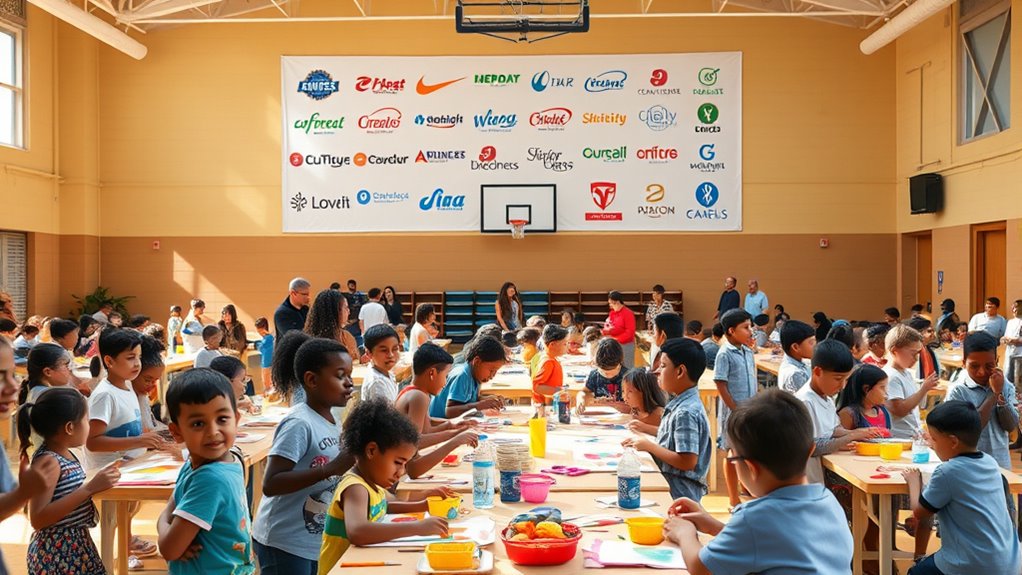
Securing funding for after-school programs can be challenging, especially when faced with inadequate resources and complex application processes.
You can explore various funding sources to help sustain these programs. Government initiatives like the Child Care and Development Fund (CCDF) and 21st Century Community Learning Centers (21st CCLC) provide federal support.
Additionally, local and state grants, such as New York State Grants, can offer substantial resources.
Local and state grants, including New York State Grants, provide significant resources for sustaining after-school programs.
Don’t overlook private funding; foundations, corporations, and individual donors often contribute to operational costs.
Partnerships with local schools and community organizations can also enhance resources.
Finally, consider in-kind contributions, like volunteer efforts, to further strengthen your program’s sustainability and reach.
Exploring these options can help guarantee your after-school program thrives.
Barriers to Access
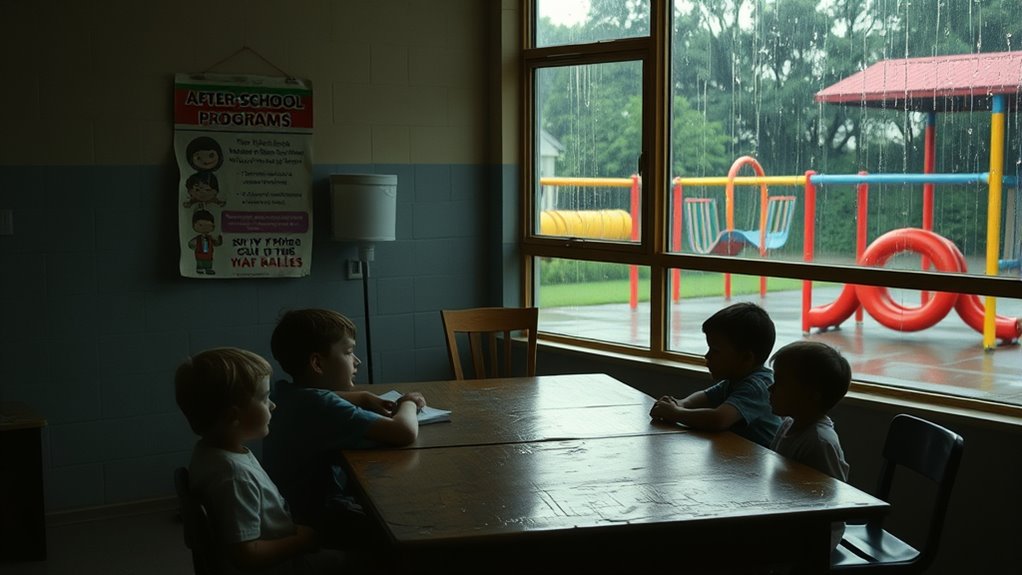
Many after-school programs, despite their benefits, face significant barriers that hinder access for children and families. Financial constraints play a vital role, with 57% of parents citing high costs as a major reason for not enrolling their children. Low-income families often struggle more, facing greater unmet demand and limited access compared to higher-income families.
Location and hours also pose challenges; 51% of parents find programs inconveniently located, while 49% indicate that hours don’t fit their needs. Additionally, cultural and demographic factors create disparities, as minority families report more barriers.
Quality concerns further complicate matters, with many parents hesitant to trust programs. Together, these barriers limit participation and exacerbate achievement gaps for children.
Impact on Student Development

While afterschool programs face access challenges, their impact on student development is profound and multifaceted.
These programs provide essential academic support, enhancing your participation and performance in school. Studies show that students involved in afterschool activities often have better attendance and improved grades, helping you stay on track academically. Additionally, engaging in such programs can lead to increased social skills, which are vital for building lasting relationships.
They also promote social-emotional learning, fostering self-esteem, confidence, and positive interactions with peers and mentors. Engaging in extracurricular activities enriches your educational experience and boosts your interest in learning. Additionally, these programs support emotional regulation, which is crucial for managing stress and developing healthy coping strategies.
Additionally, afterschool programs create safe spaces, reducing exposure to risky behaviors. Ultimately, these programs lay the groundwork for long-term success, preparing you for future academic and career opportunities, while also nurturing a supportive community around you.
Diversity in Program Availability

Because afterschool programs are essential for student development, their diversity in availability reflects the varying needs of communities across the country.
You might notice that participation rates differ among ethnic groups, with 29% of Hispanic and 24% of African-American children engaging in these programs compared to only 12% of Caucasian children. This disparity highlights a significant demand among underrepresented groups; about 60% of African-American and 57% of Hispanic children express interest in enrolling if programs were available.
Urban areas often have more options than rural regions, which can impact access. Additionally, programs need to be culturally competent and adapted to local demographics to meet the diverse needs of your community effectively.
Future Research and Developments
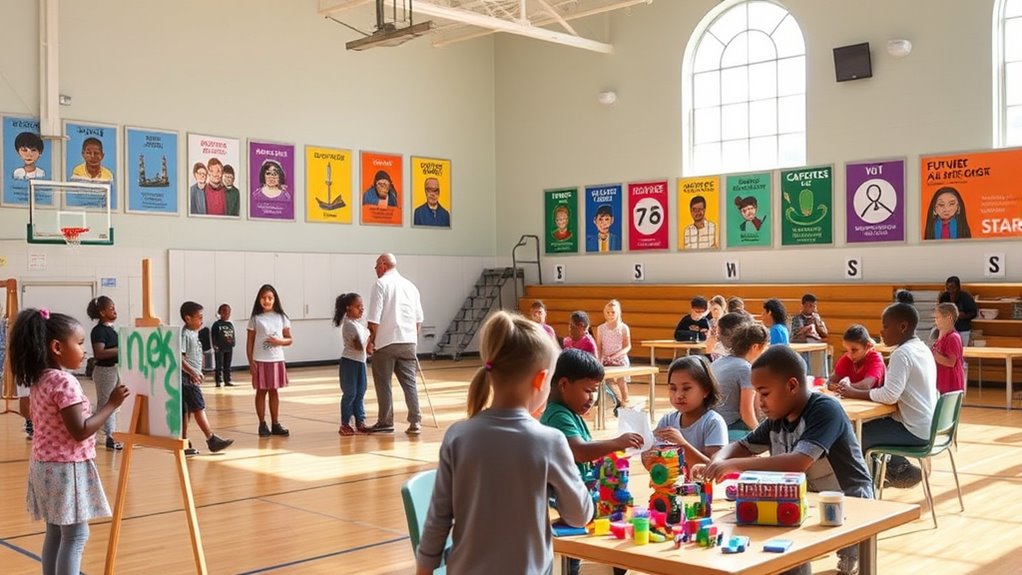
As the landscape of afterschool programs continues to evolve, future research and developments are set to play a vital role in addressing community needs. Increased state funding and ESSER grants are strengthening program support, enabling a focus on effective outcomes.
You’ll witness more initiatives measuring academic performance and social-emotional benefits, guaranteeing programs align with educational goals. Innovative models are emerging, emphasizing STEM education, mental health support, and financial literacy, catering to youth interests.
Community collaboration is essential, with networks uniting schools and organizations to enhance quality. Legislative investments, like Pennsylvania’s proposed $30 million grant, show commitment to local programs.
Community collaboration is vital, fostering connections between schools and organizations to improve program quality through significant legislative investments.
Together, these developments guarantee afterschool programs will adapt and thrive, creating lasting impacts on youth and communities.
How to Find Programs in Your Area
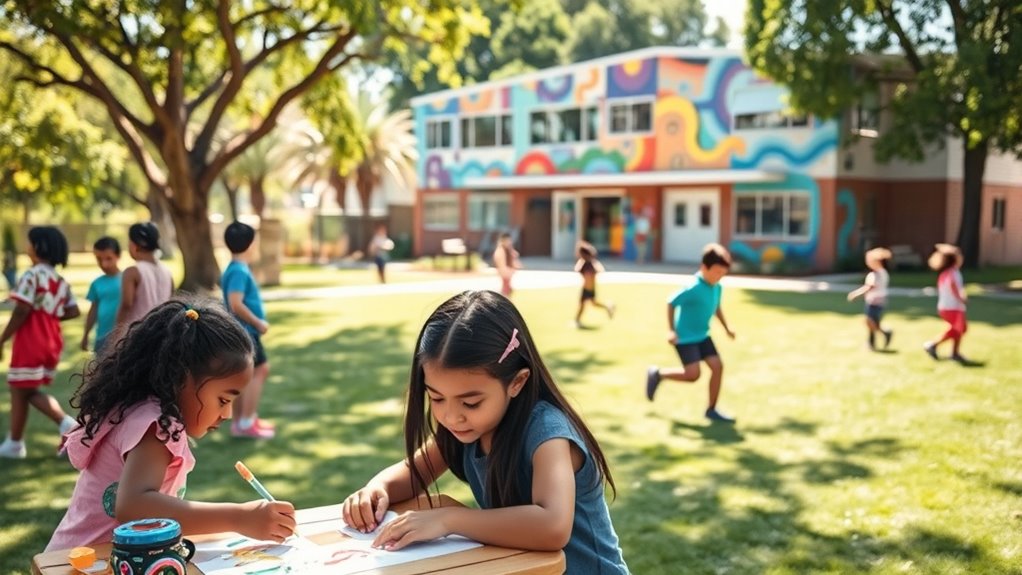
How can you find the right after-school program for your child? Start by reaching out to local schools, as many offer programs directly or partner with nonprofits.
Check community agencies like the East Bay Agency for Children for extensive services. Use online directories such as Care.com to find specific programs in your area.
Don’t forget local government initiatives, like the Town After School program in Oakland. Also, explore YMCA offerings that focus on academics and creativity.
Search engines and social media can help you discover additional options. Networking with community organizations and visiting libraries may provide valuable leads.
Finally, contact providers directly for brochures and testimonials to evaluate program quality and fit for your child.
Getting Involved and Supporting Local Programs

While many after-school programs thrive on community support, getting involved not only enhances their sustainability but also enriches the experiences of children.
You can advocate for policies that promote access and quality by engaging with initiatives like the Massachusetts Afterschool Partnership. Attend public hearings to raise awareness and build coalitions that support these essential programs.
Utilize data to demonstrate their effectiveness, helping programs secure funding and improve outcomes. Encouraging community partnerships to provide resources and increase visibility is crucial, as funding options can significantly bolster program sustainability.
Additionally, support professional development for staff, ensuring they remain equipped with the latest educational trends. Engaging in financial considerations for elderly care can also provide insights into creating sustainable funding models for after-school programs.
Frequently Asked Questions
How Can I Start an After-School Program in My Community?
To start an after-school program in your community, first assess the needs of local families through surveys or focus groups. Identify existing resources and gaps.
Then, define your program’s mission and set clear goals. Choose a convenient location and recruit qualified staff.
Develop a diverse curriculum that includes academics and recreation.
Finally, explore funding options, create a budget, and establish partnerships to guarantee the program’s sustainability and success.
What Qualifications Do Staff Members Need for After-School Programs?
Imagine a garden where each flower needs specific care to bloom. In your after-school program, staff members need a blend of qualifications.
They should have degrees in child development or education, with health and safety training under their belts. Communication skills are essential, as they’ll nurture young minds.
Experience working with children is key, just like sunlight for plants. Background checks guarantee safety, helping your garden flourish in a secure environment.
Are There After-School Programs Specifically for Special Needs Students?
Yes, there are after-school programs specifically designed for special needs students.
These programs tailor activities to meet individual needs, promoting social skills and academic growth. They often provide inclusive environments where your child can learn alongside peers.
Additionally, some programs focus on behavioral support and align services with your child’s IEP goals.
How Are After-School Programs Evaluated for Effectiveness?
After-school programs are evaluated for effectiveness through various methods. You’ll find academic achievement measures, like grades and test scores, help assess growth.
Tools like the Promising Practices Rating Scale and Survey of Afterschool Youth Outcomes evaluate program quality. Data collection, including surveys and attendance records, informs areas needing improvement.
Can Parents Volunteer in After-School Programs, and How?
Imagine you’re volunteering at a local after-school program, helping kids with their homework.
Yes, parents can definitely volunteer! You can assist as a tutor, mentor, or activity leader, bringing your unique skills to the table.
Whether it’s organizing events or coaching sports, your involvement enhances the experience for children and strengthens community ties.
Plus, you’ll gain new skills and connections while supporting your child’s growth and education in a safe environment.
Conclusion
In a world where every child’s potential is a seed waiting to bloom, after-school programs are the nurturing sunlight they need to thrive. By engaging in these enriching activities, you’re not just supporting your community; you’re helping cultivate a brighter future for the next generation. So, take a moment to explore what’s available in your area and consider how you can lend a hand. Together, we can turn those seeds of promise into a vibrant garden of achievement.
